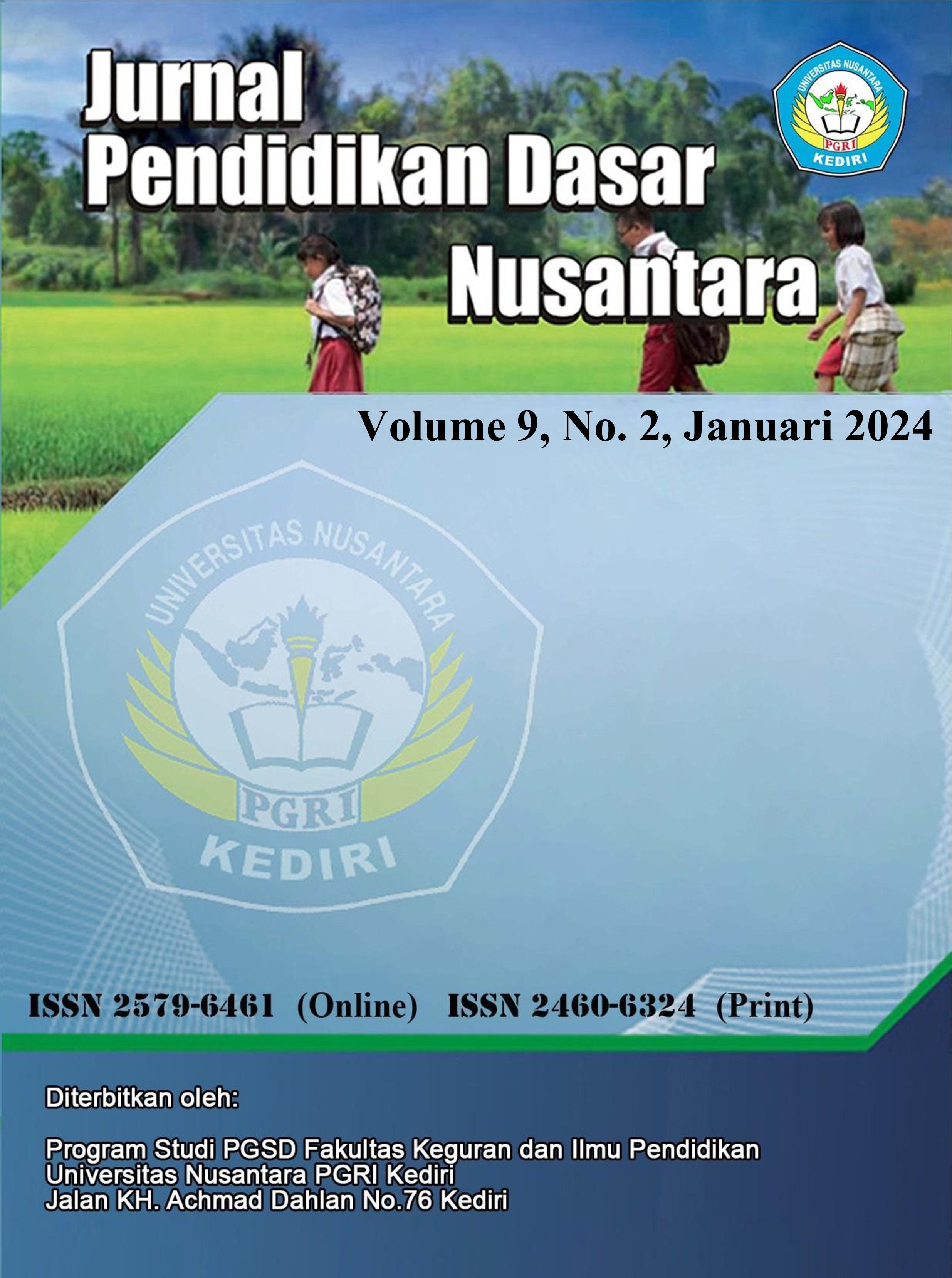Analysis of the reading ability of low vision students at the primary school teacher education, PGRI Ronggolawe University
DOI:
https://doi.org/10.29407/jpdn.v9i2.21643Keywords:
Reading ability, Low Vision Student, PGRI Ronggolawe UniversityAbstract
Abstrak: Reading is one of the language skills a person has. When someone experiences problems with their sense of sight, it will definitely affect their reading ability. One of the disorders in the sense of sight is Low Vision. This research aims to describe the reading abilities of elementary school teacher education students with low vision. In learning practices at higher education institutions, low vision students have the same rights as regular students. This research method is a case study, and the research data was collected using interview and observation techniques using interview sheet instruments and observation guide sheets. The data that has been collected is analyzed descriptively qualitatively. Based on the results of interviews and observations, the type of letters that can be read are Times New Roman, Calibri, and Arial. The results of interviews and observations show that the three letters are size 12, spacing 1, 1.5, and 2, 2.5. and 3 spaces 1, 1.5, and 2 are not readable from any distance. The three letters, with sizes 14 and 16, bold, space 1, 1.5, and 2, black, white background, are not legible, but they are legible at a distance of 10 to 15 cm when using spaces 2, 2.5, and 3 and students occasionally spell and activities are carried out in outdoor. When indoors, students need more time to carry out these activities. Research subjects were also unable to read paragraphs consisting of three or more sentences. The reading activities of research subjects are also influenced by the light around them.
Downloads
References
Amalia, Falina Noor. 2017. Pengembangan Budaya literasi Melalui Pengajaran bahasa Indonesia. Prosiding Seminar Nasional Bahasa Indonesia 2017. Palembang: Fakultas Bahasa, Universitas Sriwijaya. Palembang.
Hidayah, Widya Nur & Nawawi, Ahmad. 2017. Metode Suku Kata Untuk Pembelajaran Membaca Permulaan Peserta Dididik Low Vision. Jurnal Asesmen dan Intervensi Anak Berkebutuhan Khusus (JASSI Anakku), 2: 77-83.
Nurta, Yamir. 2013. Meningkatkan Membaca Kalimat Sederhana bagi anak Low Vision Melalui Media Kartu Kata. Jurnal Penelitian Pendidikan Khusus (Juuppekhu), 2: 33-43.
Slamet, ST.Y. 2009. Kemampuan Membaca Pemahaman Mahasiswa. Jurnal Penelitian Pendidikan (Paedagogia), 2: 118-129.
Siagian, Meliana. 2015. Efektivitas Media Garismatika Untuk meningkatkan Kemampuan Operasi Perkalian pada anak Low Vision Kelas V Di SLB A Payakumbuh. Jurnal Penelitian Pendidikan Khusus (Juuppekhu), 3: 183-191.
Agustina, Rina & Farida, Nurul. 2019. Analisis Kebutuhan Pengembangan Bahan Ajar Matematika Bagi Siswa Low Vision. Jurnal Pendidikan Matematika Raflesia, 4: 58-66.
Dewi, Annisa Dianesti & Pratisti, wiwin Dinar. 2022. Miopia Pada Anak Kembar Penyamdang Low Vision. Jurnal Pendidikan Anak Usia Dini (Obsesi), 6: 3981-3991.
Nisa, Khairun dkk. 2018. Karakteristik Dan Kebutuhan AnakBerkebutuhan Khusus. Jurnal Abdimas Adi Buana, 2: 33-40.
Estyanah, Enyta. 2022. Problematika Pembelajaran Teks Prosedur Pada ABK Penglihatan Terbatas (Low Vision) Di MTs Ma’arif NU Kota Malang. Jurnal Penelitian Pendidikan Dan Pembelajaran, 17: 23-30.
Ramadani, Irma Dewi. 2017. Layanan Pendidikan Bagi siswa Tuna Netra Low Vision Kelas V SD Muhammadiyah Boogor. Jurnal Pendidikan Guru sekolah Dasar, 6: 23-30.
Downloads
Published
Issue
Section
License
Authors who publish with this journal agree to the following terms:
- Copyright on any article is retained by the author(s).
- The author grants the journal, the right of first publication with the work simultaneously licensed under a Creative Commons Attribution License that allows others to share the work with an acknowledgment of the work’s authorship and initial publication in this journal.
- Authors are able to enter into separate, additional contractual arrangements for the non-exclusive distribution of the journal’s published version of the work (e.g., post it to an institutional repository or publish it in a book), with an acknowledgment of its initial publication in this journal.
- Authors are permitted and encouraged to post their work online (e.g., in institutional repositories or on their website) prior to and during the submission process, as it can lead to productive exchanges, as well as earlier and greater citation of published work.
- The article and any associated published material is distributed under the Creative Commons Attribution-ShareAlike 4.0 International License

































